Bongos are large, easily distinguishable antelopes with thick, spiraled horns. They have dark, auburn fur with white stripes running down the length of their bodies.
There are two different subspecies of bongos, the lowland, or western bongo, and the mountain, or eastern bongo. The lowland subspecies is Near Threatened, and the mountain subspecies is Critically Endangered. Read on to learn about the bongo.
Description of the Bongo
Bongos have distinctive reddish-brown colored coats with bright white stripes. In a forested setting, their stripes provide perfect camouflage by imitating light filtering through tree branches. They are one of the larger antelope species, and are capable of standing over 10 ft. tall at the head. In fact, they are the third largest members of their family (Bovidae) behind common and greater elands.
Interesting Facts About the Bongo
Human activity threatens these antelopes. Experts estimate that there are less than 100 mountain bongos left in the wild. Learn more about these unique creatures below.
- Scentless – Bongos are unique because they are one of the few antelope species without scent glands. Usually, animals use scent glands to find other members of their species.
- Rituals – Females will repeatedly use the same calving grounds, year after year. They return to the same areas to give birth, likely because they have proven to be safest from predators in these locations. Mothers then leave their calves to hide in this area while the they forage.
- Functional Headgear – While their horns are useful in battle, they actually serve another function. Scientists believe the horns help clear brush in dense forests while the animals are fleeing. The horns twist backwards, to help push branches down and out while walking.
- Duality – Because of their useful dual-purpose function, it is advantageous that both sexes have horns. In many closely related species of antelopes only the males bear horns. In bongos, however, both males and females have horns.
Habitat of the Bongo
This species can only survive in a fairly small range of habitats. Their coat blends in with dense forests, and their habitat choice reflects this. They prefer lush, tropical jungles of altitudes up to 13,000 feet. They also thrive in slightly disturbed forests where there are portions of low-level vegetation at forest edge. These habitats occur from heavy elephant browsing, flooding, and fires.
Distribution of the Bongo
The bongo lives in portions of central and western Africa. It has distinctly isolated populations based on habitat loss. Some populations exist in Kenya, Cameroon, South Sudan, the Central African Republic, Sierra Leone, the Republic of Congo, Liberia, Ivory Coast, Guinea, Equatorial Guinea, Ghana, and Gabon.
Diet of the Bongo
Bongos are browsers, which means that they feed primarily on branches, shrubs, and leaves, rather than on grasses. They also visit salt licks quite regularly to increase their mineral intake, a behavior also shared with okapi. Another similarity to okapi is their long, prehensile tongue. They use this long tongue to grasp and retrieve fruits, roots, leaves, bark, vines, grasses, and bushes.
Bongo and Human Interaction
Even the non-threatened subspecies of bongos receive pressure from human activity. They are heavily hunted, and poaching poses a serious problem to populations. Snares and dogs are commonly used to hunt bongos, and they are very susceptible to both methods. Deforestation also endangers these antelope, as they require dense vegetation to hide from predators.
Domestication
This species has not been domesticated in any way.
Does the Bongo Make a Good Pet
In most places, it is illegal to own a bongo as a pet. Especially with the mountain subspecies, these threatened creatures are important for the survival of the species, and keeping one as a pet would reduce the gene pool.
Bongo Care
In a zoological setting, captive breeding of bongos is incredibly important. Scientists can compare the genetics of individuals to decide which pairs are the most genetically diverse. Basically, because there are so few mountain bongos left, it is important to breed the individuals that are the least closely related.
In order to produce healthy offspring, these antelopes must be happy and healthy. Zookeepers provide them with densely vegetated enclosures that provide lots of hiding places. In addition, they are also provided with a varied diet that replicates the nutrients that they would eat in the wild as closely as possible.
Behavior of the Bongo
Bongos are reclusive and secretive creatures. Adult males will have small herds of females during the breeding season, and are solitary the rest of the year. Females will remain in small groups, usually with between six and eight animals. They are most active at night, but also exhibit crepuscular behavior, where they are active at dusk and dawn.
Reproduction of the Bongo
Females breed with the largest and strongest male, which battles for control of their small herd. After mating, they have a gestation period of about nine months. Females move to specific birth grounds to give birth to a single baby, called a calf. It takes six months for the calf to wean off its mother’s milk, and they will not reach sexual maturity until around two years of age.
Beliefs, Superstitions, and Phobias About the Bongo
A number of native peoples believed that contact with a bongo could cause severe medical complications. They believed taht eating bongo meat, as well as trapping or handling bongos, caused spasms. This resulted in less hunting of bongos, and thus less population depletion. Sadly, nowadays native people don’t believe these taboos, and hunting of these antelopes has increased.

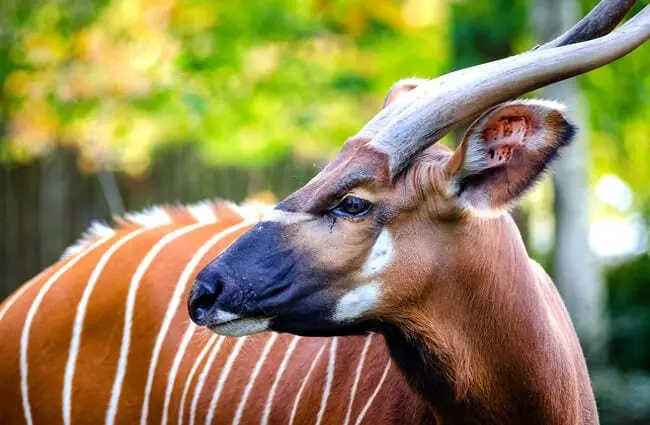
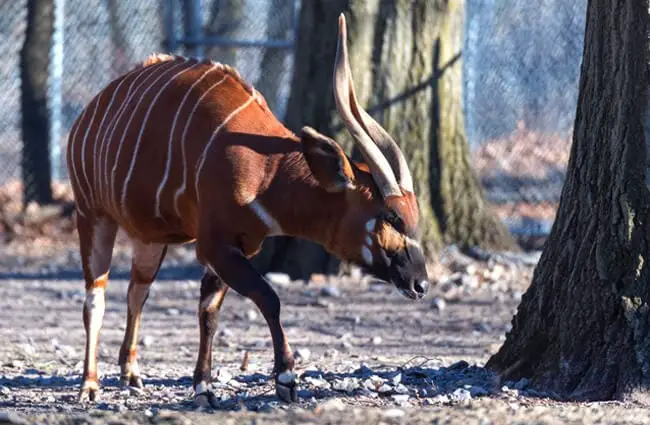
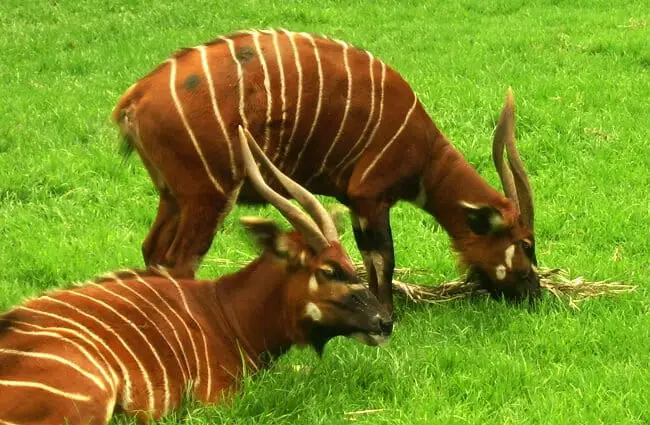
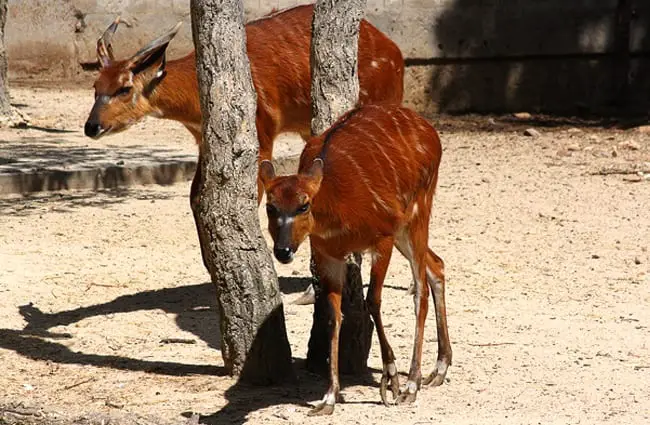
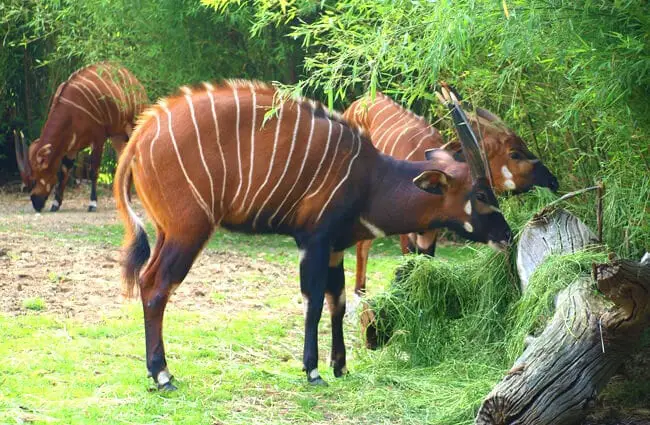
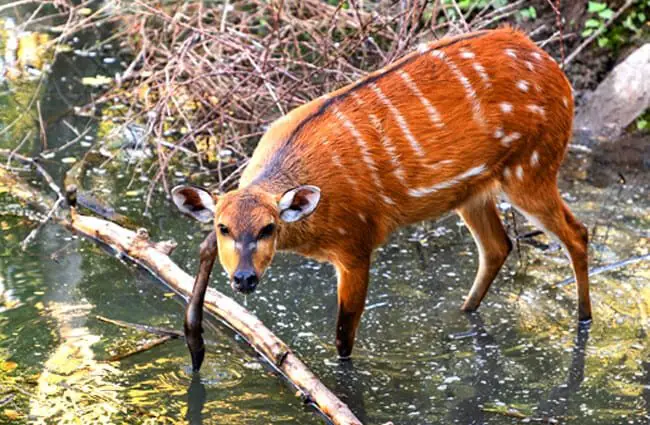




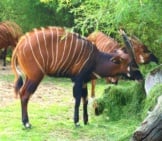

![Red Angus Closeup of a beautiful Red Angus cowPhoto by: U.S. Department of Agriculture [pubic domain]https://creativecommons.org/licenses/by/2.0/](https://animals.net/wp-content/uploads/2020/03/Red-Angus-4-238x178.jpg)












![Red Angus Closeup of a beautiful Red Angus cowPhoto by: U.S. Department of Agriculture [pubic domain]https://creativecommons.org/licenses/by/2.0/](https://animals.net/wp-content/uploads/2020/03/Red-Angus-4-100x75.jpg)

